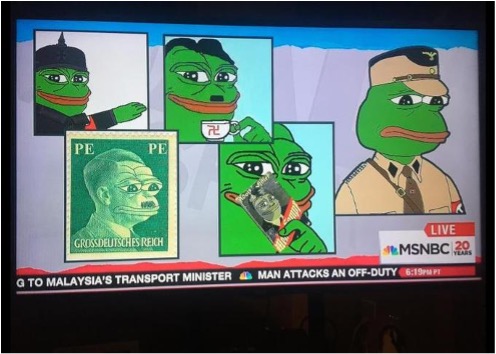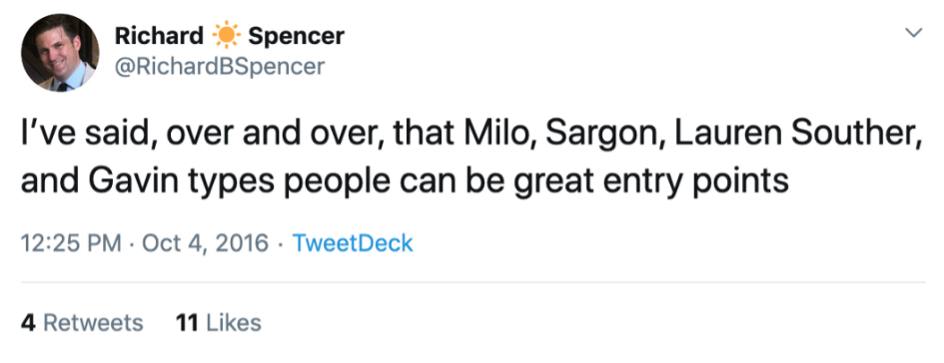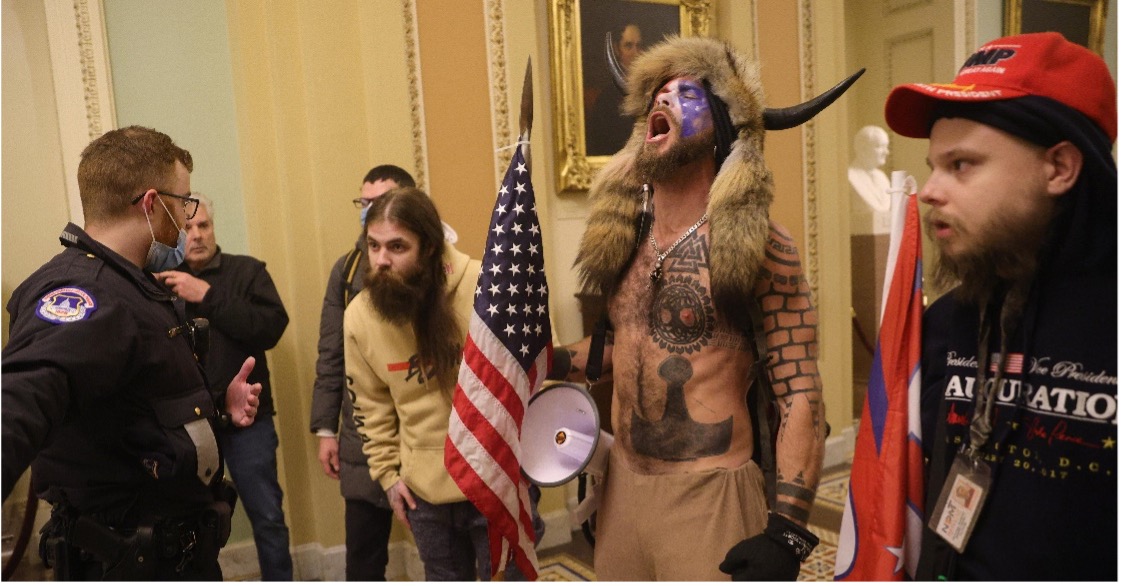Neo-Nazis and Social Media
What is Neo-Nazism?
Neo-Nazism, also referred to as "new" Nazism, describes any movements formed after World War II that embody principles of Nazism ideology. Neo-Nazi movements are present around the world and may vary in beliefs, but they share some of the same common values (Kahn). Some of these values include:
Antisemitism: Prejudice against people of Jewish heritage and/or those that practice Judaism. This may manifest as the belief that Jewish people unfairly control large companies or the government, or denial of the Holocaust.
Islamophobia: Similar to antisemitism, prejudice against people that practice Islam. This may manifest in different forms, such as believing that all Muslims are terrorists.
Nationalism: The idea that one's nation is the most important part of their identity, and that it needs to be the focus of any personal, social, or political organizations or actions even if it is to the detriment of other nations. Nationalism may present itself as the idea of reclaiming one's homeland, or forming a state based around a nation of a certain ethnicity.
Neo-Nazism lies far right on the left-wing/right-wing political spectrum and is referred to as an extremist movement.
How did neo-Nazism spread before the rise of social media?
Before the advent of the internet, neo-Nazi propaganda needed to be spread through word-of-mouth or the movement of
printed material. A prime example is the trans-Atlantic spread of neo-Nazism from Germany to the United States in
the 1970s, where propaganda needed to be carefully smuggled in from West Germany to avoid detection by the USPS (Kahn).
Recruiting was generally done through small groups in person using the shipped propaganda, however the constant threat
of arrest for openly supporting neo-Nazi ideals and need to travel for recruitment resulted in slow-growing organizations. Leaders in neo-Nazi organizations were extremely prone to arrest due to the necessity of physical propaganda materials with Gary Rex Lauck, a prominent neo-Nazi figure in the United States in the 70s, being arrested in 1976 by police in West Germany for carrying 20,000 stickers with swastika imagery in his luggage.
How does neo-Nazism spread through social media?
The rise in popularity, accessibility, and diversity of various social media platforms over the past couple decades has
made them ideal platforms for the spread of various ideologies. On these platforms, the easily shareable and attention-grabbing
nature of internet memes has made them an ideal medium for the spread of neo-Nazi propaganda. Memes may be image or text-based
but include some form of inside joke that appeals to those indoctrinated into neo-Nazism, usually considered to be offensive
and unamusing by those not following the ideology. The ever-changing and exclusionary nature of these memes makes it more
difficult to link them to neo-Nazism, and thus less likely to be censored by social media platforms (Lee).

MSNBC. Neo-Nazi memes depicting Pepe the Frog. MSNBC, 2016
The personal nature of social media platforms also makes it easier to spread neo-Nazism to people outside the ideology
in a more palatable manner. Instead of needing to attend a neo-Nazi group or rally to be exposed to its ideas, someone with
right-leaning values might instead simply stumble across a recommended video on YouTube from someone else on the right who
supports the ideas behind neo-Nazism but not the stigma associated with the label and then slowly identify more and more
with neo-Nazism. This more gradual approach to radicalization has been acknowledged by neo-Nazis themselves as being more
effective for recruitment. The American neo-Nazi Richard Spencer, for example, references the viewpoints of Milo Yiannopolous,
Carl Benjamin, Lauren Southern, and Gavin McInnes as places to start with being exposed to less extreme versions of neo-Nazi ideology.

Spencer, Richard. 'I've said, over and over..' Twitter, 4 Oct. 2021.
As well, the ability to easily share photos and videos to a wide audience via social media has made it much easier to identify
and spread neo-Nazi imagery within a specific organization or worldwide. A prominent example stems from a photo taken of Jake Angeli,
a prominent figure in the QAnon movement, during the United States Capitol attack on January 6th, 2021. The picture shows Angeli
shirtless and wearing a fur hat with horns inside the Capitol during the attack, a photo reused by news outlets and users on various
social media platforms to highlight the radical but organized nature of the attack. Though none of Angeli's tattoos bear easily
recognizable swastika imagery, several of them can still be linked to neo-Nazism (Birkett). The triangle shaped valknut tattoo on
Angeli's chest is a Norse symbol associated with violent battle and, increasingly, white supremacy. Though not fully visible in this
photo, the Sonnenrad (sun-wheel) tattoo on his left shoulder is another Norse symbol that was used by the original Nazis to promote
the idea of an Aryan society. Though the average person may not recognize the symbols adorning Angeli's body as offensive, they act
as a sign to those involved in Neo Nazism that the ideology has now managed to be physically present within the highest levels of
American government and may encourage further dangerous actions stemming from neo-Nazi beliefs.

McNamee, Win. 'Congress Hold Joint Session To Ratify 2020 Presidential Election.' Getty Images, 6 Jan. 2021.
Why is the spread of neo-Nazism through social media more problematic?
While neo-Nazism is a dangerous ideology in any form, its presence on social media means that indoctrination of new members no longer needs to happen through a large organization. Anyone identifying with neo-Nazi values that has followers on a Facebook, TikTok or any other platform can now spread the ideology to others, resulting in more people than before learning about and identifying with those beliefs (Bogost). The anonymous nature of some social media sites, such as Reddit, also makes indoctrination much easier because there is less personal risk involved when finding suitable members to recruit. In the past sharing antisemitic views with, say, your neighbour may have caused someone to be socially shunned, but now if your antisemitic post on Reddit is found to be too offensive you can just make a new account.
As troubling as the scope of indoctrination is now, however, the depth of indoctrination is also a concern. The use of algorithms to control what appears on someone's feed based on past viewing makes it very easy for people to form their own echo chambers online. With inflammatory and offensive content more likely to circulate on social media, it is easy to go from viewing one viral video with neo-Nazi themes to having a timeline filled with conspiracy theories on how Jewish people control the government (Bogost). As social media exerts more and more influence over society as a whole, it is important to recognize how it can be stopped from spreading harmful values.


